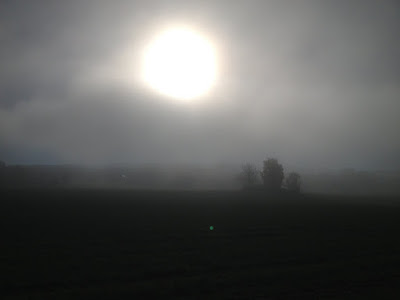For people used to live closer to the equator, the Swedish habit of turing their faces towards the sun must seem very strange. Even if we who live in the southern part of Sweden do not experience midnight sun, the difference between summer and winter is significant. We keep a close look at the time for the sunrise and sunset.
This difference, although providing us with the nice aspect of having real seasons, poses difficulties when it comes to solar power. Some cities such as Gothenburg provide information about to what extent it's a good idea to put solar panels on your roof (no, The Google Project Sunroof has not reached Sweden yet). In addition we also have a national programme focusing on solar power, led by the Swedish Energy Agency, and the Svensk solenergi association for both industry and academia.
Sometimes you also need some extra light why it's good to have all these nifty solar powered lamps. Many years ago I bought a lovely sun jar to use when I go camping (which unfortunately does not happen very often, but it looks nice in the window as well).
In 2014, I went to Berlin on a business trip with several of my colleagues. It was rainy and windy the day we spent inspecting the commercial innovation system, why we focused our efforts to contribute to EU GDP by visiting KaDeWe. There I bought the more mobile The Little Sun device that looks like a sunflower. Not only does it run on solar power, but for every little sun you buy the company gives one away to people in low-income countries. Little Sun is a social business and a certified B corporation.
I'm very glad there are so many researchers focusing on solar power, but I'm equally grateful for companies like IKEA who help promote and sell solar panels. They put them on their own roofs and are now evaluating the results from selling solar panels in the UK, the Netherlands and Switzerland. Of course, it makes more sense from a business perspective to perhaps introduce it to other markets before Sweden but we sure would like them here now!
 |
| From Varnhem Autumn 2015 |
Sometimes you also need some extra light why it's good to have all these nifty solar powered lamps. Many years ago I bought a lovely sun jar to use when I go camping (which unfortunately does not happen very often, but it looks nice in the window as well).
In 2014, I went to Berlin on a business trip with several of my colleagues. It was rainy and windy the day we spent inspecting the commercial innovation system, why we focused our efforts to contribute to EU GDP by visiting KaDeWe. There I bought the more mobile The Little Sun device that looks like a sunflower. Not only does it run on solar power, but for every little sun you buy the company gives one away to people in low-income countries. Little Sun is a social business and a certified B corporation.
 |
| From Gunnebo Autumn 2015 |
Another social and sun-oriented business is Trine from Gothenburg. They are providing an innovative crowd-lending business model. No, not crowdfunding, crowd-lending. In their words they close "the gap between private capital in developed countries and local solar partners in emerging markets". As always, there are competitors on the rise why it will be interesting to see how they develop.
The true Swedish cleantech company HiNation is another social business. It works with renewable energy to empower people in developing countries. They started out with lamps, but now they have a whole range of products and are no longer targeting low-income countries.
There's a whole range of metaphors associated with the sun. Plato, for one example, presented his analogy of the sun in the sixth book of the Republic. One of the best fables in my opinion is The North Wind and the Sun. We often find it in lyrics such as "You are the sunshine of my life" or one of my favourite Elton John songs "Don't let the sun go down on me".
The true Swedish cleantech company HiNation is another social business. It works with renewable energy to empower people in developing countries. They started out with lamps, but now they have a whole range of products and are no longer targeting low-income countries.
There's a whole range of metaphors associated with the sun. Plato, for one example, presented his analogy of the sun in the sixth book of the Republic. One of the best fables in my opinion is The North Wind and the Sun. We often find it in lyrics such as "You are the sunshine of my life" or one of my favourite Elton John songs "Don't let the sun go down on me".
 |
| From Orust June 2014 |
Together with UNHCR, IKEA has funded a special building for refugees called Better Shelter including solar panels for light and energy. Maybe in the future, we'll see solar panels included in the BoKlok concept as well! Perhaps when solar windows have become more efficient and cheaper. Or, if we're unlucky, in the future we all will live in Better Shelters.









